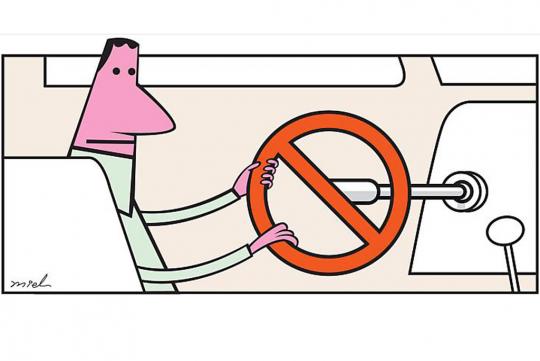Bring fairness back to the COE system
Bring fairness back to the COE system

Most people will agree that vehicle population control is necessary for a small, land-scarce country like Singapore. Most will also agree that the vehicle quota system - which requires motorists to bid for and secure Certificates of Entitlement (COE) before they can own a vehicle - has worked fairly well in that respect since implementation in 1990.
At the same time, it has generated an estimated $50 billion in additional tax revenue over the years.
But the 23-year old system can certainly be improved.
This week, the Land Transport Authority (LTA) and Ministry of Transport (MOT) introduced engine power as an additional criterion to engine size, to group cars into their COE categories in a more equitable way. Alas, it won't be very effective.
A far better way to ensure equity is to categorise cars according to their values. But first of all, does social equity have a place in a system that essentially accords one access to a car based on one's ability to pay?
It does. The quota system was originally designed with an element of equity. There were four car categories in the past: Cat 1 (up to 1,000cc); Cat 2 (1,001 to 1,600cc); Cat 3 (1,601 to 2,000cc) and Cat 4 (above 2,000cc).
Engine sizes were a proxy for car values. In 1999, they were distilled into two: Cat A (cars up to 1,600cc); and Cat B (cars above 1,600cc). The move was made to "improve liquidity" and minimise "price distortions".
But as a result, a measure of equity went out the window, as budget car buyers had to compete with buyers of costlier cars. Buyers of family carriers (such as MPVs) had to compete with buyers of Porsches and Ferraris.
The situation worsened five years ago when Mercedes launched a 1.6-litre C-class, followed by sub-1,600cc models from Audi, BMW and Volvo.
These pricier cars began to nudge mass market cars such as Toyotas, Nissans, Hondas and Hyundais out as buyers of the latter could not keep up with bids from those who could afford the pricier brands. Today, premium and luxury brands account for 70 percent of Cat A cars sold - up from less than 1 percent five years ago.
After four months of deliberation and consultation, the LTA and MOT decided to apply an engine power cap to inject some equity back into Cat A. Cars in this COE category must not only meet the 1,600cc cap, but also not produce more than 130bhp of power.
On the surface, this makes sense, as premium and luxury cars tend to have more powerful (largely turbocharged) engines. And with the change, some 90 percent of cars remaining in Cat A will have an open-market value (OMV, or approximate cost price) of less than $20,000.
But just as engine capacity has become irrelevant as a proxy for a car's value, the power cap will soon lose its bite.
Mercedes and BMW (and most other European makes) already have engines that produce less than 130bhp. These are mostly manual transmission models, which are not popular here. But it won't be long before manufacturers make automatic versions. Industry watchers expect the first to arrive within nine months.
What will the authorities do then? Lower the power limit? If so, budget cars will be affected as well. Already, the 130bhp cap - which kicks in in February - will move some mass market Cat A models to Cat B. They include cars from Proton, Suzuki, Citroen, Ford, Hyundai, Opel, Peugeot, Skoda and Volkswagen.
Using a power criterion is thus simplistic and ineffectual.
If the idea is to categorise cars according to their values, why not use values to begin with? Why use proxies?
Cars already have an OMV assessed by Singapore Customs. It is calculated based on a vehicle's cost price, freight, insurance and all other charges incidental to the sale and delivery of the car from country of manufacture to Singapore. The LTA and MOT argue that OMVs are prone to fluctuations, and thus are not a suitable measure.
It is a difficult argument to follow. First, OMV for a particular model does not fluctuate wildly unless there is a regional or global financial crisis. Second, averages can be used to pare down whatever little variations there are. We can use three, six, nine, 12 or even 24-month averages of OMV.
Or the authorities could remove the foreign exchange element in OMV for this COE categorisation exercise. This would be similar to international accounting standards which allow companies to restate their financials before and after taking into account forex gains or losses.
Or perhaps OMV should be redefined, for instance by streamlining elements that have little to do with a car's intrinsic value. Car dealers and manufacturers have been coming up with inventive ways to minimise their OMV for decades now - despite stiff penalties for under-declaration. The trend has taken a new turn with manufacturers setting up offices here to do their own importation, and the lifting of a ban on imported used cars.
Fixing the COE conundrum thus begins with fixing OMV.
Admittedly, it is far more difficult than drawing an arbitrary line across engine sizes or outputs. And it requires inter-ministerial cooperation, which often slows things down considerably. But it will be a worthwhile exercise, given that the entire vehicular taxation system hinges on OMV.
Fixing it will pave the way for equity - not only for buyers, but sellers too. In fact, with a robust value-based system, we could have one COE category, with premiums pegged to the OMV of each car.
Picture credit : ST Illustration by Miel



4 Comments
Recommended Comments
Create an account or sign in to comment
You need to be a member in order to leave a comment
Create an account
Sign up for a new account in our community. It's easy!
Register a new accountSign in
Already have an account? Sign in here.
Sign In Now